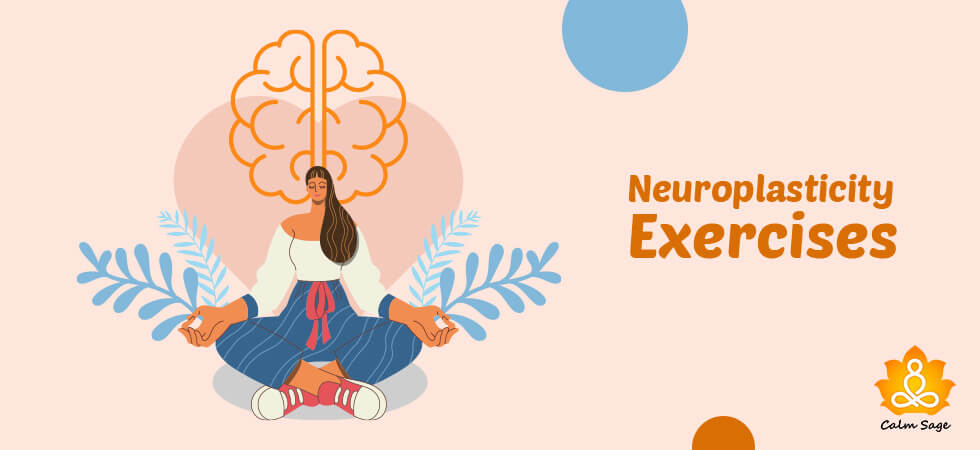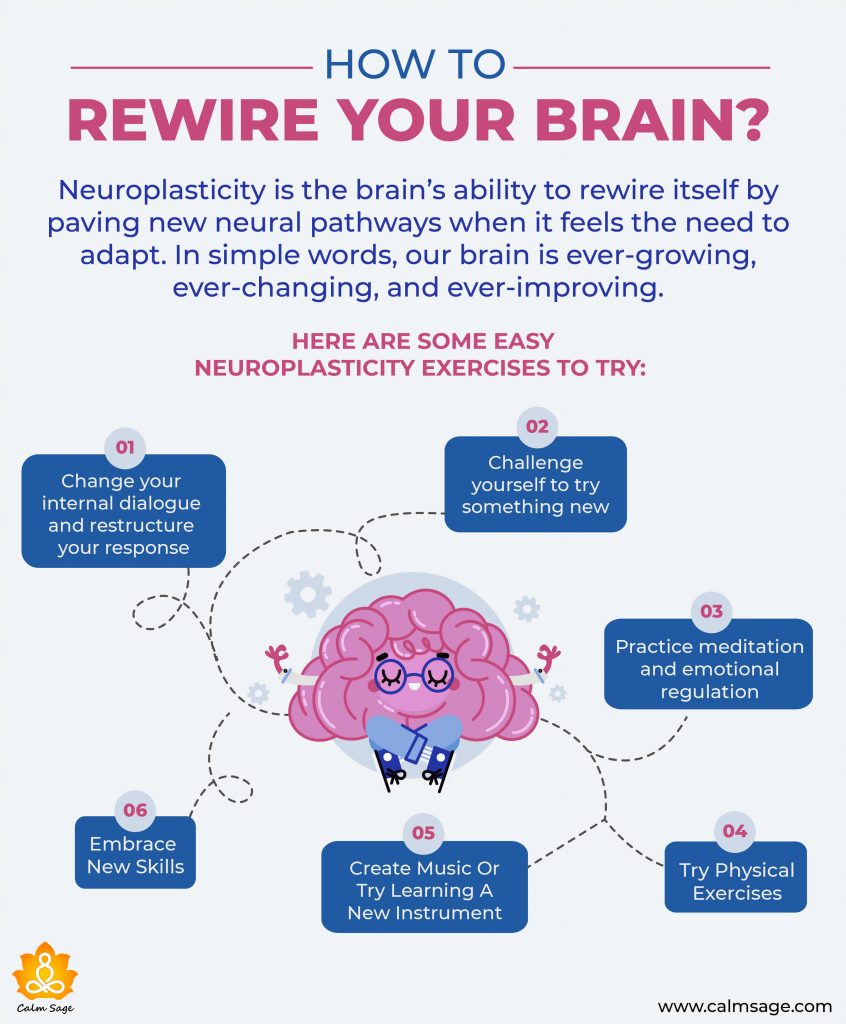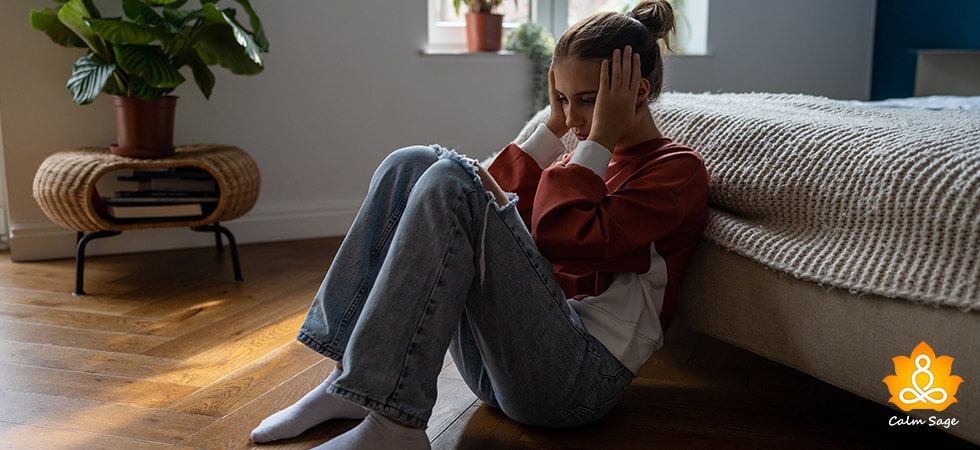6 Simple Neuroplasticity Exercises to Rewire Your Anxious Brain

The brain is a complex organ but it’s beautiful. Our brain is constantly changing and adapting to help us navigate life and the challenges it brings.
But sometimes, our brain gets confused, and to keep us safe, it can make us feel more anxious and alert. Even if we know that everything will be okay. The good news is that we can train and rewire our brains to better deal with anxious situations.
By paving new neural pathways and creating new connections between neurons, we can train our brains to reduce anxiety and response. Sounds complicated, right?
Don’t worry, in this blog, you’ll discover simple neuroplasticity exercises that can help you deal with anxiety effectively.
Neuroplasticity For Anxiety

Neuroplasticity is the brain’s ability to rewire itself by paving new neural pathways when it feels the need to adapt. In simple words, our brain is ever-growing, ever-changing, ever-improving.
Let me give you an example; If someone suffers a traumatic brain injury and loses the ability to speak, they may regain their speech with the help of therapy. This happens because therapy helps the brain rewire itself by creating new pathways.
Researchers also believe that negative thinking that co-occurs with depression might happen because of impaired neuroplasticity. With neuroplasticity exercises, one can train their brain to promote positive thinking that can help improve their mental health.
With neuroplasticity exercises, you can learn to create a shield between your trigger and your reaction so that your anxiety isn’t immediate. Remember, the more you practice these neuroplasticity exercises, the older your previous pathways will become.
6 Neuroplasticity Exercises to Relieve Anxiety
Well, rewiring your brain might sound exhausting and complicated but it’s not. Let’s look at some of the most simple neuroplasticity exercises you can try at home:

1. Change Your Sentence Structure
Neuroplasticity doesn’t work when your brain is running the same lines over and over. If you want to change your perception and thinking, you can try to change your sentence structure.
For example; you can try saying “I am scared of this but I’m dealing with it. This is my plan.” Doing this will help change your internal dialogue and restructure your response.
2. Challenge Yourself
Another way to use neuroplasticity to your advantage is to challenge yourself. Do what you’re scared of (albeit slowly). Start easy; if you feel anxious talking to others, you can challenge yourself to begin a conversation with an acquaintance first. Increase your distress tolerance slowly to reduce your stress response.
3. Meditate
Practicing meditation, long term, can help grow new neural pathways too which can help in emotional regulation, reduce symptoms of anxiety, and alleviate stress. Meditations that focus on kindness and compassion can help reframe thoughts creating new neural pathways and connections.
4. Try Physical Exercises
Researchers believe that physical or aerobic exercises can help change brain structures. Exercises can help increase the blood flow that can help cell growth in the brain.
If you exercise regularly, then you’ll see a change in your emotional, mental, and physical wellness. Regular exercise can boost brain health and reduce symptoms of depression and anxiety.
5. Create Music
Music not only pleases our mind and soul but can also help reduce our anxiety. Music therapy also helps reduce cognitive decline, improve memory, and increase concentration. When you combine music with other activities such as painting or dancing, then it can help promote neuroplasticity. Music is good for your brain and doesn’t let anyone tell you otherwise.
6. Embrace New Skills
Taking out time for your hobbies is also a great exercise if you struggle with anxiety and want to change your habits. Each time you embrace a new skill you increase your brain’s ability to restructure itself.
New skills can include:
- Brainteasers
- Puzzles
- Learning a new language
- Creating art
- Travel
- Writing with your non-dominant hand
Rewiring your brain to help reduce anxiety may take time. Nothing happens overnight and while you may experience some challenges, it will be worth the practice. Neuroplasticity is a long process, after all, you’re training your brain – but with regular practice and training, you will be successful in rewiring your anxious brain.
Keep in mind that for some people, the process might last for a few weeks but for others, it may take months.
However, I recommend that you keep practicing these neuroplasticity exercises for at least 21 days for them to become a habit. Once it becomes a habit, rewiring your brain might not take much time.
Old habits die hard, indeed but it’s never too late to relearn new habits – one that helps you stay mentally strong and healthy. Our brains are ever-growing and ever-changing so keep going – one day at a time.
Not that complicated, right?
In any case, if you need additional help, you can connect with us at info@calmsage.com or DM us on social media. You can also write your thoughts in the comments below!
Take Care!




















